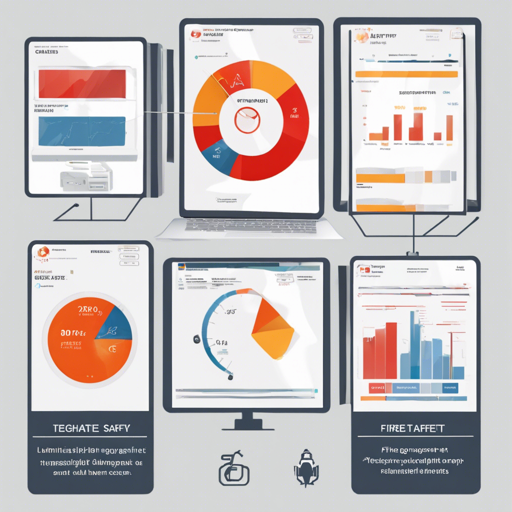Welcome to the world of Fireguard Report, a dynamic report management package in PHP that simplifies the process of exporting information in various formats such as HTML, PDF, and IMAGE. In this guide, we will take a user-friendly approach to walk you through the installation, configuration, and usage of Fireguard Report. So, let’s dive in!
Installation
To get started with Fireguard Report, you must install it through Composer. This can be achieved effortlessly with the following command:
composer require fireguardreportIf you prefer a manual approach, add the following snippet to your composer.json file:
require:
fireguardreport: ^0.1Installing and Updating PhantomJs
PhantomJs is crucial for generating PDF files and images. To ensure seamless updates, you have two methods:
- Option 1: Add these lines in your
composer.jsonto automate PhantomJs installation:
scripts:
post-install-cmd: [
PhantomInstallerInstaller::installPhantomJS
],
post-update-cmd: [
PhantomInstallerInstaller::installPhantomJS
]composer.json:scripts:
update-phantomjs: [
PhantomInstallerInstaller::installPhantomJS
]Then, run it whenever you want to update:
composer run-script update-phantomjsHow to Use Fireguard Report
Now we are ready to generate our first report. The package requires two key objects: Report for defining the content and Exporter for handling the exporting process.
Generating Our First Report
Here’s how you can generate a basic report:
$report = new FireguardReportReport(<h1>Report Title</h1>);
$exporter = new FireguardReportExportersPdfExporter();
$file = $exporter->generate($report);After executing the code above, the variable $file will contain the path to the generated file.
Adding Headers and Footers
You can customize your reports further by adding headers and footers in the PDF exporter:
$html = file_get_contents('report.html');
$header = '<div style="text-align: center; font-size: 20px; border-bottom: 1px #eeeeee solid; padding: 1px;">
<strong>THE MANAGEMENT REPORT TITLE</strong>
</div>';
$footer = '<div style="text-align: right; font-size: 10px; border-top: 1px #eeeeee solid; padding: 2px;">
Page <span>@numPage</span> of <span>@totalPages</span>
</div>';
$report = new FireguardReportReport($html, $header, $footer);
$exporter = new FireguardReportExportersPdfExporter('.', 'report1-to-pdf');
$file = $exporter->generate($report);After running this code, $file will hold the path to your formatted PDF file with header and footer.
Exporters
Fireguard Report includes multiple exporters: HTML, PDF, and IMAGE. Each exporter specializes in handling different formats. You can even create your custom exporters! Here’s how the exporters work:
Think of them as chefs in a restaurant kitchen. The Report is the main dish, and each Exporter is a different chef who has a unique way of cooking and presenting the dish. The HTML chef serves the dish in a colorful bowl (HTML format), the PDF chef wraps it in a neat container (PDF format), and the IMAGE chef snaps a photo of your dish to make it visually appealing (IMAGE format).
Methods available in all Exports
getPath(): Returns the location where the generated file will be saved.setPath($path, $mode = 0777): Sets the file save location.generate(ReportInterface $report): Renders the report and returns the file path.
Using Fireguard Report with Laravel
If you’re using Laravel, you can easily integrate Fireguard Report by registering the service provider in your configuration file:
providers = [
FireguardReportLaravelReportServiceProvider::class,
]This step will enable Laravel’s dependency injection, making it easier to use Fireguard’s exporters and configuration files.
Troubleshooting
In case of issues, here are a few troubleshooting ideas:
- Ensure Composer is properly installed and updated.
- Verify that PhantomJs is correctly configured by running the installation script.
- If you encounter file path errors, check the directories and permissions where the files are being saved.
For more insights, updates, or to collaborate on AI development projects, stay connected with fxis.ai.
Conclusion
At fxis.ai, we believe that such advancements are crucial for the future of AI, as they enable more comprehensive and effective solutions. Our team is continually exploring new methodologies to push the envelope in artificial intelligence, ensuring that our clients benefit from the latest technological innovations.

